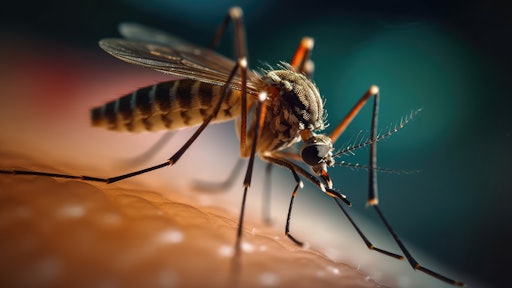
Stinging pests can be a significant concern for food processing facilities, especially during the warmer summer months when populations grow rapidly. These pests not only disrupt productivity but can also pose health risks to employees, contractors, and the public due to their painful stings, which may lead to swelling, infections, nausea, and allergic reactions.
To proactively address this issue, it's essential to be aware of common stinging pest groups found in and around food processing, handling and support facilities.
· Paper wasp. These pests resemble yellow jackets but can be identified by their distinctive yellow antenna. They prefer dark, void areas and will sting to protect their colonies, releasing harmful toxins that may cause severe allergic reactions.
· Bees. Most bees rarely sting humans, and stings usually happen accidentally when the insects are swatted, grabbed, or unexpectedly encountered. Beneficial bees should be safely relocated by professionals when found in areas with people.
· Hornets. Among the more aggressive stinging pests, hornets deliver painful stings and can even cause temporary blindness by squirting venom when they feel threatened. Immediate treatment and handling are necessary when a hornet's nest is discovered.
· Ants. Certain ant species can deliver painful and dangerous stings, like fire ants, harvester ants, and Asian needle ants. While primarily outdoor ants, they may venture inside in search of food and water.
· Yellow jacket. Easily recognized by their black bodies and yellow markings, yellow jackets are highly aggressive and can cause damage to wooden surfaces and drywall. If you spot adult yellow jackets, there's likely a nearby nest.
To protect your facility, as well as your employees, from stinging pests, an integrated pest management (IPM) program is highly effective. These programs focus on preventive measures such as exclusion, sanitation, and maintenance to keep pests outside the business. Customized IPM programs are common in food-related businesses, particularly those undergoing regular third-party food safety audits and inspections. Pest control technicians, working with the facility's food safety and quality assurance team, implement these programs to deter pest activity and prevent infestations.
Here are some techniques to help keep stinging pests at bay:
1. Maintain your property grounds. Beautiful blooms and elaborate landscaping make your property more attractive to people and flying, stinging pests alike. Trimming overgrown branches, keeping plants from touching the exterior of your building and removing excess wood mulch can help limit the presence of stinging pests.
2. Secure your exterior. Perhaps the most important preventive measure you can take when it comes to helping eliminate pests inside your facility is implementing exclusion tactics. Exclusion refers to techniques that include the repairing, sealing off, and shutting down of any common entry points for pets around your facility. Make sure to inspect your exterior with your pest control provider to determine where you can continue to secure your facility.
3. Keep it clean. Maintaining a clean facility cannot be overstated when it comes to helping keep any pests at bay. Make sure you clean your facilities daily, wiping down surfaces, removing clutter, and emptying trash cans. Exposed trash and food debris can inadvertently attract stinging pests to your facility. Also make sure clutter is kept from accumulating on the exterior.
4. Train your staff. Investing in a staff training plan that can teach your employees how to spot signs of stinging pests is also an effective way to help prevent an infestation on the front end. Your employees see and hear more than you might know, which makes them invaluable in helping identify pest issues. Most pest control providers offer complimentary staff training, making this tactic cost-effective for your operations. Once your staff knows the types of stinging pests that frequent your facility, persistent hot spots, and the process for reporting pest activity, they’ll be able to help you address pest issues quickly and effectively.
In case of a stinging pest infestation, promptly notify your pest control provider and keep detailed records of where they were reported and high activity times to aid in diagnosing and removing the threat. For extreme infestations, more aggressive pest treatments like fumigation may be necessary. For environmentally integral pests like honeybees, professional relocation/removal is vital to avoid aggressive responses from disturbed hives. Always check local regulations regarding honeybees, as many states have legal restrictions protecting them.
To ensure your facility remains pest-free and employees and customers are safe, review your unique IPM plan with a pest control provider. If you don't have an IPM program or a reliable pest control provider, it's crucial to implement one before pest issues become costly or harmful. Staying proactive in dealing with stinging pests will safeguard your products, employees, and business operations.

















